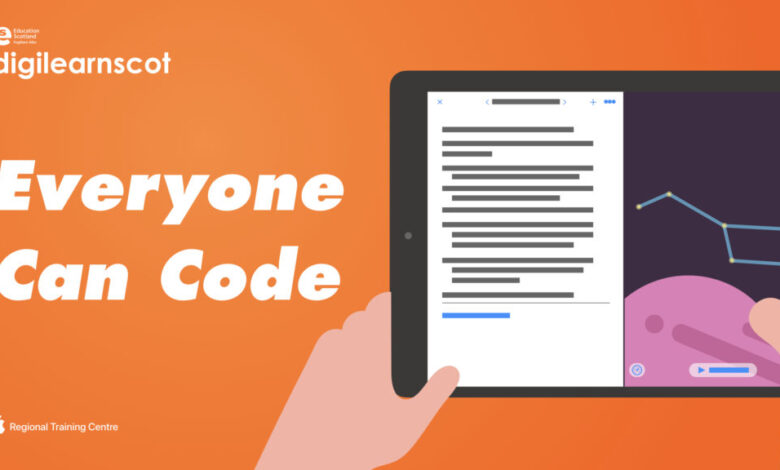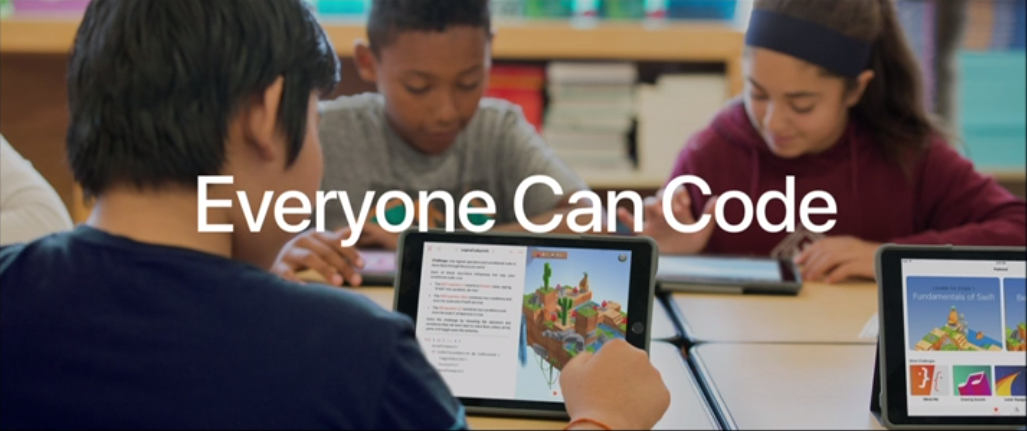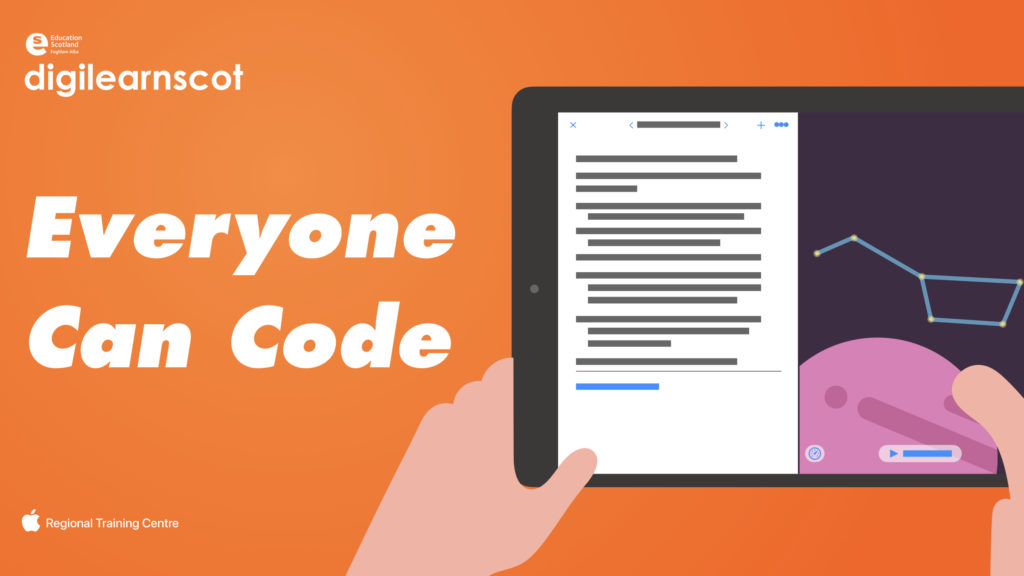
Make Everyone a Developer A Coding Revolution
Make everyone a developer – it sounds ambitious, right? But imagine a world where coding skills aren’t the exclusive domain of tech experts. This isn’t just about creating more programmers; it’s about empowering individuals to solve problems, innovate, and shape the future with technology. It’s about breaking down the barriers that prevent so many from accessing this powerful tool, fostering a more inclusive and technologically advanced society.
This journey explores the potential of widespread coding literacy, examining the benefits for individuals and society as a whole. We’ll delve into practical approaches to teaching coding, addressing the challenges of accessibility, and looking at the ethical considerations of a world where everyone can code. Get ready to explore the exciting possibilities!
The Vision
Democratizing coding is more than just a catchy phrase; it’s a fundamental shift in how we approach education, innovation, and economic opportunity. The ability to code isn’t just a specialized skill anymore; it’s becoming an increasingly valuable literacy, akin to reading and writing, in our digitally driven world. Widespread coding literacy holds the key to unlocking a future brimming with technological advancements and social progress.The potential societal impact of widespread coding literacy is profound and far-reaching.
Imagine a world where individuals from all backgrounds possess the skills to create, adapt, and critically evaluate technology. This would lead to a more inclusive and equitable distribution of technological benefits, fostering innovation across all sectors of society. It would empower individuals to build solutions to local problems, driving economic growth and improving quality of life in underserved communities.
Furthermore, a digitally literate populace is better equipped to navigate the complexities of the digital age, reducing vulnerability to misinformation and promoting digital citizenship.
Benefits for Individuals Learning to Code
Learning to code provides individuals with a powerful skillset that translates to numerous career opportunities across diverse industries. From software development and data science to web design and cybersecurity, the demand for skilled programmers is consistently high and growing. Moreover, the ability to code enhances problem-solving skills. The process of coding necessitates breaking down complex problems into smaller, manageable parts, designing logical solutions, and testing those solutions iteratively.
This analytical and creative approach to problem-solving is transferable to many aspects of life, fostering critical thinking and adaptability. For example, a student learning to code might apply their newly acquired logical thinking skills to solve problems in mathematics or engineering, while a professional programmer might apply their problem-solving skills to improving efficiency within their company.
Challenges in Making Coding Accessible
While the benefits of widespread coding literacy are clear, significant challenges remain in making coding accessible to everyone. The digital divide, a persistent gap in access to technology and internet connectivity, remains a major obstacle, particularly for individuals in low-income communities and developing countries. Lack of adequate education and resources, including quality coding curricula, experienced instructors, and affordable learning materials, further exacerbates this issue.
Many existing educational systems are not equipped to effectively integrate coding education into their curricula, leading to a lack of opportunities for many students. Moreover, cultural barriers and societal perceptions of coding as a niche, highly technical field can discourage individuals from pursuing coding education. For instance, a lack of female representation in the tech industry can deter girls from pursuing coding careers, perpetuating a gender imbalance in the field.
Addressing these challenges requires a multi-pronged approach involving investment in infrastructure, educational reform, and targeted outreach programs to bridge the digital divide and foster inclusivity in the field of coding.
Approaches to Empowering Citizen Developers: Make Everyone A Developer
Empowering citizen developers—individuals without formal computer science training who create software solutions for their organizations—requires a multi-faceted approach. Success hinges on providing accessible learning resources and fostering a supportive learning environment. This involves carefully considering different teaching methodologies and crafting a curriculum that prioritizes practical application and real-world problem-solving.
Comparison of Coding Teaching Methods
Different learning styles necessitate diverse approaches to teaching coding. Gamification, visual programming languages, and traditional methods each offer unique advantages and disadvantages. Gamification, using game mechanics to enhance learning, can boost engagement and motivation, particularly for beginners. However, it might not always translate to proficiency in more complex coding concepts. Visual programming languages, such as Scratch or Blockly, offer a low-threshold entry point by allowing users to create programs through drag-and-drop interfaces.
This simplifies the learning curve but may limit exposure to the underlying logic and syntax crucial for advanced programming. Traditional methods, encompassing textbooks, lectures, and hands-on coding exercises, provide a structured and in-depth understanding of programming fundamentals. However, they can be less engaging and potentially more challenging for those new to the field. The ideal approach often involves a blended learning strategy, combining aspects of all three methods to cater to diverse learning styles and skill levels.
Beginner Coding Curriculum Design
A beginner coding course should focus on practical application and real-world projects to maintain engagement and demonstrate the relevance of coding skills. The curriculum could be structured as follows:
- Introduction to Programming Concepts: This module covers fundamental concepts such as variables, data types, operators, and control flow (if-else statements, loops). Simple exercises and mini-projects, like creating a basic calculator or a number guessing game, reinforce these concepts.
- Introduction to a Specific Programming Language: Python is often recommended for beginners due to its readability and versatility. This module covers basic syntax, input/output operations, and working with different data structures (lists, dictionaries).
- Practical Project 1: Data Analysis and Visualization: Students analyze a real-world dataset (e.g., weather data, stock prices) using Python libraries like Pandas and Matplotlib to create visualizations and draw insights. This project emphasizes data manipulation and presentation skills.
- Web Development Fundamentals (HTML, CSS, JavaScript): This module introduces the basics of web development, allowing students to build simple websites. A project could involve creating a personal portfolio website or a simple web application.
- Practical Project 2: Building a Simple Web Application: Students build a small web application using their newly acquired skills. This could be a simple to-do list application, a basic blog, or a simple calculator.
- Version Control (Git): This module introduces Git and GitHub, essential tools for collaborative software development. Students learn to use Git for version control and collaborate on projects.
Free and Low-Cost Online Coding Resources
Numerous free and low-cost online resources are available for learning to code. The best resource depends on the learner’s skill level and preferred programming language.
Beginner Level:
- Codecademy: Offers interactive courses in various programming languages, including Python, JavaScript, and HTML/CSS.
- Khan Academy: Provides free courses on computer programming concepts and JavaScript.
- freeCodeCamp: Offers a comprehensive curriculum for web development, including front-end and back-end technologies.
Intermediate Level:
- Udacity: Provides nanodegrees and courses in various technologies, including web development, data science, and artificial intelligence. Some courses are free, while others require payment.
- Coursera: Offers a wide range of courses from universities and organizations worldwide, many of which are free to audit.
- edX: Similar to Coursera, edX offers university-level courses, some of which are free to audit.
Advanced Level:
- MIT OpenCourseWare: Offers free access to course materials from MIT, including advanced computer science courses.
- YouTube Channels (e.g., Traversy Media, freeCodeCamp.org): Many YouTube channels provide tutorials and lectures on various programming topics.
Addressing Barriers to Entry

The dream of a world where everyone can be a developer is hampered by several significant hurdles. Many aspiring coders face obstacles that prevent them from even starting their coding journey, let alone progressing to a professional level. Understanding and addressing these barriers is crucial to achieving true democratization of coding skills.
These barriers are multifaceted and often intertwined, creating a complex challenge. They range from the practical limitations of time and money to more psychological barriers such as fear of failure and a lack of confidence. Overcoming these obstacles requires a multi-pronged approach, encompassing affordable and accessible education, supportive learning environments, and a shift in societal perception of coding.
Common Obstacles to Learning to Code
Several key factors prevent many individuals from pursuing coding education and careers. These obstacles are not insurmountable, but recognizing their existence is the first step towards effective solutions.
- Lack of Time: Balancing work, family, and other commitments leaves little time for dedicated learning. Many potential coders find it difficult to carve out the necessary hours for structured courses or self-study.
- Financial Constraints: Coding bootcamps and university courses can be expensive, making them inaccessible to many. The cost of software, hardware, and online resources also adds to the financial burden.
- Fear of Failure: The perception that coding is exceptionally difficult can be intimidating, leading to self-doubt and preventing individuals from even attempting to learn. This fear is often exacerbated by a lack of prior experience or exposure to programming.
- Lack of Access to Resources: Not everyone has access to reliable internet, computers, or supportive learning environments. This digital divide disproportionately affects individuals in under-resourced communities.
- Lack of Mentorship and Support: Learning to code can be challenging, and having access to mentors or supportive communities can significantly improve success rates. Many aspiring developers lack this crucial element of support.
Solutions to Overcome Barriers
Addressing the barriers to entry requires a combination of strategies focused on increasing accessibility and affordability, fostering a supportive learning environment, and promoting inclusivity.
The “make everyone a developer” movement is gaining traction, and tools like low-code platforms are key to making this a reality. Learning to build apps shouldn’t require years of coding; that’s why I’ve been exploring the exciting possibilities discussed in this article on domino app dev, the low-code and pro-code future , which shows how accessible app development can be.
Ultimately, empowering more people to code leads to more innovative solutions for everyone.
- Affordable and Accessible Education: Promoting free or low-cost online courses, offering scholarships, and creating community-based learning initiatives can significantly improve access to coding education.
- Flexible Learning Options: Providing self-paced online courses, short workshops, and micro-learning modules caters to individuals with limited time and allows for personalized learning journeys.
- Mentorship and Community Support: Creating online and offline communities, pairing experienced developers with beginners, and organizing coding meetups can provide crucial support and encouragement.
- Promoting Inclusive Learning Environments: Creating welcoming and inclusive learning environments that cater to diverse learners with varying levels of prior experience is essential for fostering a sense of belonging and encouraging participation.
- Addressing the Digital Divide: Providing access to computers and reliable internet connectivity in under-resourced communities is crucial for ensuring equitable access to coding education.
Examples of Successful Initiatives
Several initiatives have demonstrated success in making coding education more inclusive and equitable. These examples highlight the effectiveness of different approaches and inspire further innovation in the field.
| Initiative | Target Audience | Methods | Outcomes |
|---|---|---|---|
| Code.org | K-12 students, particularly underrepresented groups | Free online courses, curriculum resources, advocacy for computer science education | Increased participation of girls and underrepresented minorities in computer science |
| FreeCodeCamp | Individuals seeking to learn web development | Free online curriculum, community support, certification programs | Thousands of graduates have secured jobs in the tech industry |
| Girls Who Code | Girls and young women interested in computer science | Summer immersion programs, after-school clubs, college scholarships | Increased representation of women in the tech industry |
| Black Girls CODE | African-American girls interested in technology | Workshops, coding camps, mentorship programs | Empowered young African-American women to pursue careers in technology |
The Future of “Everyone a Developer”

Imagine a world where coding isn’t a niche skill confined to tech professionals, but a fundamental literacy, as common as reading and writing. This isn’t science fiction; the “everyone a developer” movement is paving the way for just such a reality. The implications are vast and transformative, touching every aspect of our lives. This widespread coding proficiency holds both immense potential and significant ethical challenges that must be carefully considered.A world where a significant portion of the population is coding-proficient would lead to a surge in innovation and problem-solving across all sectors.
We would see a dramatic increase in the creation of bespoke software solutions tailored to specific needs, fostering efficiency and personalized experiences. The democratization of technology would empower individuals and communities to build tools and applications addressing their unique challenges, leading to a more equitable and technologically advanced society. This, however, is not without its complexities.
Ethical Considerations of Widespread Coding Literacy
The widespread adoption of coding literacy brings with it crucial ethical considerations. The potential for bias in algorithms, already a significant concern, will be magnified if more individuals, without proper training in ethical coding practices, are developing software. Algorithms underpin many aspects of our lives, from loan applications to medical diagnoses, and biases embedded within these systems can perpetuate and exacerbate existing inequalities.
Therefore, robust ethical guidelines and educational initiatives focused on responsible AI development and algorithmic accountability are paramount to mitigating these risks. We need to ensure that coding education includes a strong emphasis on fairness, transparency, and the potential societal impact of the code being written. This includes understanding the implications of data privacy and security in the context of algorithm design and implementation.
The focus should be on building ethical frameworks and best practices that guide developers in creating fair and unbiased systems.
Impact on Various Sectors, Make everyone a developer
The impact of increased coding proficiency across various sectors will be profound. Consider the following:
The increased accessibility of coding will lead to significant advancements across numerous sectors. This democratization of technological development will not only improve efficiency and innovation but also address long-standing societal issues. It is crucial to consider the potential impacts in diverse fields to fully appreciate the scope of this transformative shift.
- Healthcare: More individuals with coding skills could lead to the development of personalized healthcare applications, improved medical device functionality, and more efficient hospital management systems. Imagine citizen developers creating apps to track patient data, manage appointments, or even assist in remote diagnosis.
- Education: Teachers and students could create customized learning tools and educational games, fostering a more engaging and personalized learning experience. This could lead to the development of adaptive learning platforms that cater to individual student needs and learning styles, addressing the challenges of diverse learners.
- Business: Businesses could empower employees to develop internal tools and streamline workflows, leading to increased efficiency and productivity. This could range from automating repetitive tasks to creating custom CRM systems, empowering employees to become active participants in shaping their work environment and increasing overall organizational agility.
Illustrative Examples
Seeing citizen development in action truly showcases its potential. Real-world applications highlight how individuals with limited coding backgrounds can create impactful solutions, demonstrating the power of accessible tools and platforms. Let’s explore some examples that illustrate this transformative potential.
A Citizen Development Project: Streamlining Local Food Bank Operations
Imagine a small town struggling with inefficient food bank operations. Volunteers spend hours manually tracking inventory, managing donations, and scheduling deliveries. A local resident, Sarah, with basic coding skills learned through an online course, decides to develop a simple inventory management system. This system utilizes a spreadsheet-based interface (think Google Sheets) coupled with a custom script. The script automates tasks like updating inventory levels based on donations and withdrawals, generating reports on food expiration dates, and even sending automated notifications to volunteers about upcoming deliveries.The pseudo-code for a core function (updating inventory) might look like this: function updateInventory(item, quantity, type) // type can be "donation" or "withdrawal" let currentQuantity = getInventory(item); if (type == "donation") currentQuantity += quantity; else currentQuantity -= quantity; updateSpreadsheet(item, currentQuantity); if (currentQuantity <= lowStockThreshold(item))
sendNotification("Low stock of " + item);
This system, while basic, significantly reduces manual work, minimizes food waste through better tracking of expiration dates, and improves overall efficiency.
The positive societal impact is clear: more efficient food distribution, reduced administrative burden on volunteers, and ultimately, better service to those in need.
Real-World Application: A Neighborhood Watch App
In a suburban neighborhood plagued by petty theft, residents, lacking formal programming expertise, collaborated using a no-code platform to build a neighborhood watch app. They used pre-built modules and drag-and-drop interfaces to create a system that allowed residents to report incidents, share real-time updates, and communicate with each other. The process involved several brainstorming sessions, where features were prioritized based on community needs.
The platform's intuitive interface allowed them to build the app within weeks. The result was a significant decrease in reported incidents, improved community engagement, and a stronger sense of security. The app’s success relied on collaborative design and the platform’s ease of use, demonstrating that impactful solutions can be created even without extensive coding knowledge.
Visual Representation: A Simple Algorithm for Sorting
The visual representation is a flowchart illustrating a bubble sort algorithm. The flowchart begins with a rectangle labeled "Start," followed by a diamond-shaped decision node asking "Are there unsorted elements?". If yes, a rectangular process node shows two elements being compared. Another diamond-shaped node checks if the elements are in the correct order. If not, a rectangular process node swaps the elements.
The process repeats until the decision node determines there are no unsorted elements. Finally, a rectangle labeled "End" concludes the flowchart. This visually represents how a simple algorithm can systematically solve the common problem of sorting data, a task applicable to numerous situations, from organizing contact lists to optimizing search results. The flowchart clearly demonstrates the logical steps involved, making the concept accessible even to those without programming experience.
Ultimate Conclusion

The vision of "make everyone a developer" is more than just a catchy phrase; it's a pathway to a more equitable and technologically empowered future. By lowering the barriers to entry and fostering a culture of digital literacy, we can unlock untold potential, driving innovation across all sectors and empowering individuals to shape the world around them. The journey to democratize coding won't be easy, but the rewards – a more inclusive, innovative, and problem-solving society – are well worth the effort.
Let's start building that future, one line of code at a time.
Question & Answer Hub
What are the most in-demand coding skills right now?
Currently, skills in Python, JavaScript, and Java are highly sought after, along with expertise in data science and cybersecurity.
Is it too late to learn to code at my age?
Absolutely not! It's never too late to learn a new skill. Many successful coders started later in life. The key is finding a learning method that suits you and sticking with it.
How much does it cost to learn to code?
The cost varies greatly. Many free resources are available online, while paid courses and bootcamps range widely in price.
What kind of jobs can I get with coding skills?
Coding skills open doors to a vast range of careers, from software developer and web developer to data scientist, cybersecurity analyst, and game developer, among many others.
